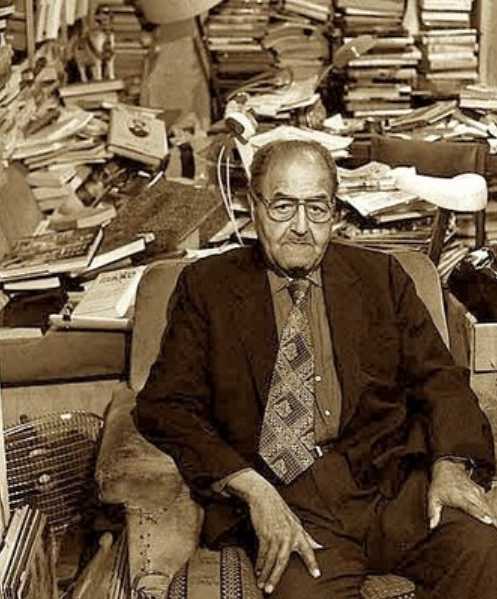4.1.2.6.1 Gastón Baquero (1918 – 1997) and “Origins”

Gastón Baquero only published one poem in “Orígenes,” entitled “The Lark Sings at the Gates of Heaven”—dedicated, incidentally, to Angel Gaztelu—in the magazine’s first issue. Later, he distanced himself somewhat from the magazine, but his poetics continued to be similar in more ways to the hidden sources of Origenism; and his earliest work would, incidentally, be anthologized by Ciento Vitier in its “Ten Cuban Poets” exhibition.
In this text, in addition to the religious connotations of the inveterate worship of creatures toward the Creator, embodied in the lark’s song, there is also a reverence for life and an attitude that would be inherent to this poet, captured with great lyrical mastery: to live life to the end, to drain to the last drop that chalice that can sometimes be bitter but is still the only way. Some stanzas are transcribed:
“The lark sings at the gates of heaven its infinite harps.
He sings golden spaces surrendering to the dawn in soft steps.
The Lark sings the angelic joy of the stars, sings the choir of God.
Illuminating fountains and transits of stars in the flesh of the sky.
(…)
Where, where does this tight throat of sidereal foam come from?
And this dazzling lace hanging from her lip vibrates with every note.
I ask where it comes from, I inquire about the original place of every arpeggio.
Where it comes from, how the wind makes it possible, guest of the seas.
And as this audience of roses emerges, listening to the response,
And the prayer of fire that is the dawn linked in the voice of the Lark.
(…)
Listen! The cymbals of the awakened sky renew the dawn.
Like a gesture from God, the trills are brought to a silent song.
And your voice has not ceased on the faces of the seraphim.
And what great silence you put under my blood.”
Baquero shared a festive, if you will, religiosity of defended joy with other poets of Orígenes. The bard does not seek his answers in the realm of cold intellection but rather prioritizes emotionality, an understanding that can only be produced from profound empathy with divinity, overcoming the dichotomy of life and death, through a sojourn in “the original place of all arpeggio.”
The pieces by Gastón Baquero compiled by Cintio Vitier in “Diez poetas cubanos” (Ten Cuban Poets), a book published under the Orígenes label and containing works by the poets who were the aesthetic bastions of the group, have a heterogeneous character in that in them the bard strained his lyrical instrument to different points, but they are an expression of a poetics that is always enlightenment and a marvelous song.
This selection includes sonnets of intense lyrical display, such as those titled “Feeling My Coming Ghost,” “Genesis,” and “Birth of Christ,” in which we can see that the free flow of his poetry is not at odds with the tight rhythm of traditional compositions. The latter two share a religious theme—a mythical coming of life, with a biblical imprint and a more explicit profession of the author’s Catholic faith.
For his part, the poems in book-length verse achieve expressions worthy of appearing at the forefront of the national lyrical tradition, among which are “Words Written in the Sand by an Innocent”; but also “Saul on His Sword,” both of an aesthetic construction that integrates a tremulous emotion in the face of human helplessness.
Regarding these, Cintio Vitier would say: “We underline the exceptional significance of “Words Written in the Sand by an Innocent” and “Saul on His Sword”, texts that in our opinion are situated at the highest level of universality of Hispanic American poetry.” Beyond these transcendent pieces, the whole of Gastón Baquero’s poetic creation work is included in the most select of Cuban lyric poetry of the 20th century and of all times to come.








